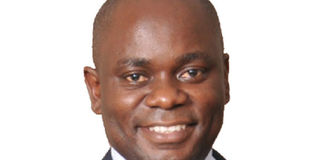Is Uganda’s economy suffering from dynamic inefficiency?

Welcome to a macroeconomics lecture from the last century since the same old economics can explain the slow economic growth problem. Whether economic growth recovers from 4 per cent to 6 per cent, the rate is still too low to enable realisation of government’s aspirations for 2040.
The good news is we can grow faster by getting out of the automatic mode into the manual processes that allow engagement of the right gears for the task at hand.
In 2002, my friend spent 10 hours on a journey of 280 kilometres from Mbarara to Kampala. The automatic transmission system got locked in gear No. 2, which gave him adequate power, but not the required speed. He was having dynamism (moving), but in a very inefficient way – call it dynamic inefficiency.
Too much power was locked up in the engine and could not reach the wheels. This is similar to an economy that consistently invests more than it earns in profits.
The growth of any economy requires transmission of power from the stock of assets into the actual movers of the economy – the processes that generate goods and services.
If too much investment happens at the expense of consumption, the economy tends to suffer from dynamic inefficiency. Uncontrolled or automatic investments in real estate, infrastructure, land, planting of trees with long-term returns compared to food crops, coffee, cotton etc, results in locking up of money from circulation leading to anemia – lack of blood.
A dynamically inefficient economy has excessive savings, which leads to excessive capital accumulation. The cash flows (money) that are generated by capital are very low compared to the level of investment.
Consider a set of eight apartments that cost Shs2 billion. Full occupancy at Shs500,000 per month, which is rare these days, will result in Shs48 million per year, or nearly 42 years to recover the investment.
That is too little power (cash flow earnings) from such a powerful engine (stock of real estate). Limited cash flows have resulted in loan defaults, which is a major threat to the banking sector.
The economy is littered with many such examples in nearly all sectors. Education and industry have many entities that are operating at less than half the capacity, roads have hardly any commercial vehicles, a lot of electricity never lights a bulb or turns a motor in a factory.
Investments with very low returns (cash flows and profits) qualify to be partial savings, meaning the economy has over saved! Millions of parents have sold land and livestock to educate children whose degrees and diplomas are nothing, but stock of untested knowledge. The stock of government bonds and bills to the tune of about Shs12 trillion, is only draining resources through interest payments with no addition to real growth.
The country needs to change gears manually and not rely only on the automatic invisible hand of markets. The good gesture of a lowering the Central Bank Rate, has not triggered the expected private sector credit while the massive infrastructure is yet to bring competitiveness.
Both the public and private sector budgets are so strained that no aggressive tax measures will resolve the pending cash crisis. Should we print money? No. The shortage of money is a macroeconomic policy problem and not a creation of money printers.
What should Uganda do? Sorry, this macroeconomics lesson will resume after the lecturer is paid his enhanced allowance.
In the meantime, let us restructure the government, the politics and development policies, including the development planning framework. Economic situations like these require a strategy not a plan.
Dr Muhumuza is a development policy analyst committed to inclusive growth.




